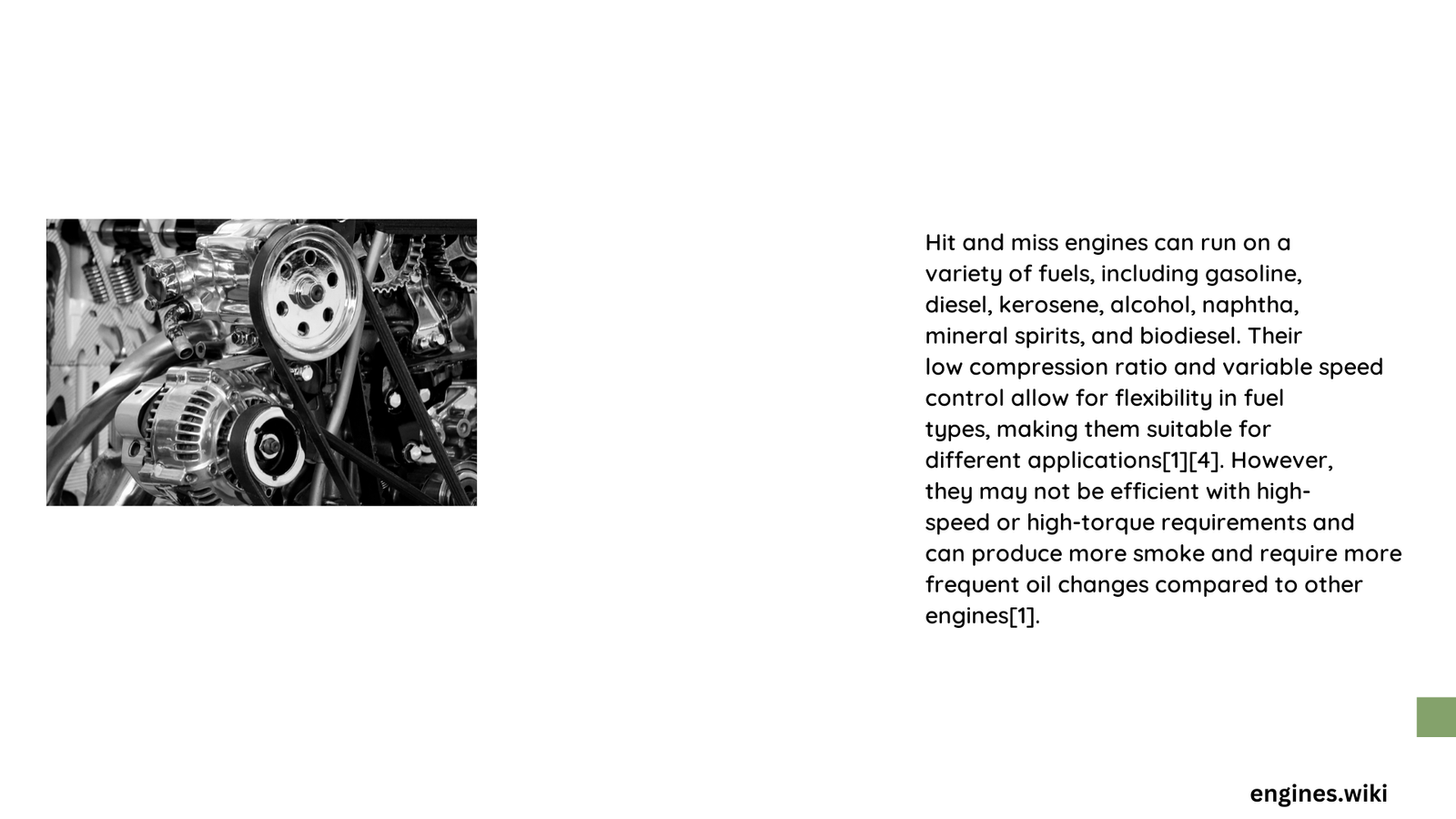Hit and miss engines represent a fascinating segment of historical mechanical engineering, where fuel selection plays a critical role in maintaining optimal performance. These unique power sources require specialized fuel considerations, balancing historical authenticity with modern performance standards. Understanding the nuanced fuel requirements can mean the difference between a smoothly running vintage engine and a problematic mechanical system.
What Makes Hit and Miss Engine Fuel Unique?
Why Fuel Selection Matters for Hit and Miss Engines?
Hit and miss engines demand precise fuel specifications to function effectively. Unlike modern engines, these vintage powerhouses have specific requirements that go beyond standard fuel recommendations.
Fuel Composition Characteristics
| Fuel Type | Octane Rating | Ethanol Content | Recommended Usage |
|---|---|---|---|
| White Gas | 92-98 | 0% | Highly Recommended |
| Unleaded Gasoline | 95-98 | 0% | Acceptable |
| Aviation Gas | 100 LL | 0% | Excellent Alternative |
What Are the Primary Fuel Considerations?
- Octane Requirements
- Minimum 92 octane rating
- Zero ethanol content
-
Clean, stable fuel composition
-
Oil Mixture Specifications
- Typical ratios: 15:1, 20:1, or 40:1 (fuel to oil)
- Use high-quality 2-stroke oil
- Recommended brands: Marvel Mystery Oil
How Does Fuel Impact Engine Performance?
Hit and miss engines operate on a unique combustion principle where fuel efficiency is directly tied to the engine’s speed control mechanism. The fuel’s quality significantly influences:
- Combustion efficiency
- Engine longevity
- Overall mechanical performance
What Fuel-Related Challenges Exist?
Potential Fuel-Induced Issues
- Corrosion: Ethanol-containing fuels can cause rapid component degradation
- Water Absorption: Improper fuel storage leads to moisture contamination
- Deposit Formation: Low-quality fuels create internal engine buildup
What Maintenance Practices Protect the Engine?
- Use high-octane, ethanol-free fuels
- Maintain proper fuel-to-oil ratios
- Store fuel in sealed, clean containers
- Perform regular engine cleaning
- Inspect fuel system components periodically
How Much Fuel Do Hit and Miss Engines Consume?
Fuel consumption varies, but a general estimate suggests:
– Approximately 1 gallon per hour per horsepower
– Actual consumption depends on load conditions
– Efficiency improves under consistent mechanical load
What Expert Recommendations Exist?
Vintage engine specialists consistently recommend:
– Prioritize fuel purity
– Avoid modern gasoline with ethanol
– Use specialized vintage engine lubricants
– Conduct regular system inspections
Conclusion

Selecting the right hit and miss engine fuel requires understanding historical mechanical engineering principles and modern preservation techniques. By following these guidelines, enthusiasts can maintain these remarkable machines’ performance and historical integrity.
